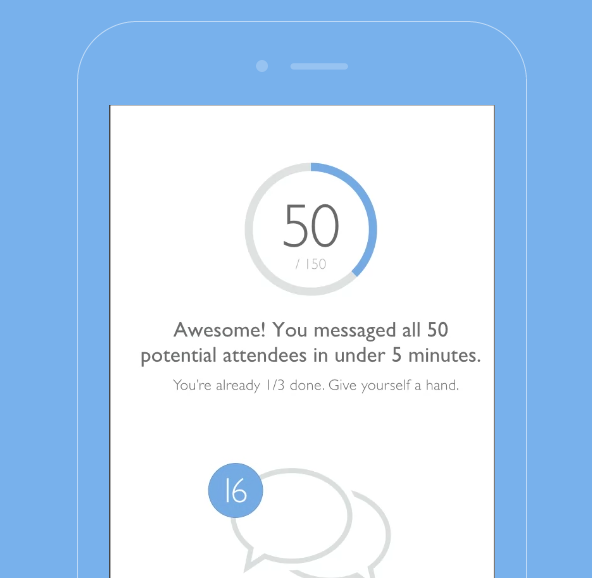Voting In The Inbox: How Text Messaging Is Changing Modern Electioneering
Time to read:
This post is part of Twilio’s archive and may contain outdated information. We’re always building something new, so be sure to check out our latest posts for the most up-to-date insights.

In 2012, there was a sea change in electioneering that defines the way campaigns operate today. A developer with an army of data and a simple guiding principle looked beyond a demographic slice, saw individual voters, and treated them as such. Dan Wagner, then Obama’s Chief Analytics Officer, strategized personal relationship building which helped Obama secure the presidency in 2012, and propelled the DNC to the forefront of voter outreach.
Success meant reaching voters as wholly unique individuals, and it still does. Personal connection to a candidate can’t be bought or sold. But, it can be crafted. It can be engineered, and it can be delivered to your inbox.
Teaching An Old Game New Tricks

126 million people voted in the 2012 Presidential Election. 93 million eligible voters did not vote. This simple statistic spells out an obvious and unavoidable truth for political groups — getting out the vote isn’t easy, but it doesn’t have to be hard if you’re using the right strategy.
The winning strategy makes the most of the tool already in your back pocket.
Text messaging is fast and above all, wildly effective in turning a contact into a supporter or even a volunteer. Vote.org and Bernie Sanders’ campaign can attest to that fact. When their goals increased, phone banking wasn’t cutting it. They turned to Hustle.
Bernie Sanders Sends Millions of Texts

In September of 2015, organizers on the Bernie Sanders campaign were busy fighting in key battleground states. Using Hustle, a peer-to-peer text messaging platform powered by Twilio, Sanders’ team could reach far more contacts in a fraction of the time, with greater success by an order of magnitude.
Sanders’ campaign had millions of conversations with millions of potential voters, all in real time, all via text.
In the time it takes to make one call, the Sanders campaign could send 16 tailored messages to contacts using Hustle. Texts from the platform log 3x the response rate of phone calls, with an average 98% open rate, 90% response rate, and 83% of messages being opened in the first 3 minutes.
There’s something missing from this workflow — dialing. Hustle is markedly more effective than a tried, true (and still useful) tool of the political trade – phone banking.
Throughout the primary, Sanders’ campaign sent 15 million messages to 6 million people, logging over 5.7 million responses from 1.7 million people. 28% of people contacted responded. Many of these responses turned into active volunteers. Hustle reported that Sanders’ team scheduled 37 volunteer shifts in just 2 hours -18.5 times the average number of shifts in one phone bank. 53% of these shifts were filled by first time volunteers.
This success can’t be achieved without speed and scale. Campaigns are inherently time-sensitive (to make a gross understatement), and their reach is in the order of millions.
For Organizers, By Organizers
Hustle’s founding team is comprised of engineers with experience in organizing. Perry Rosenstein worked as a New Media Director for Obama’s 2008 campaign. Roddy Lindsay was a software engineer at Facebook. They built Hustle for organizers, with an emphasis on easy adoption. There’s no time on a campaign trail to make calls to support, or breeze through a user manual for the second time.
Hustle’s messages are sent manually, queuing one at a time, allowing users to craft personalized messages effortlessly and instantly. A customizable script is automatically loaded. Organizers simply have to hit send, and another contact and message will pop up, allowing hundreds of texts to be sent in a matter of minutes.
The Medium and The Message
The medium works, but, the message is what you make of it. Roddy Lindsay, CEO and Co-founder of Hustle credits the success of campaigns to an “authentic experience” between the campaign and contact. Now more than ever, campaigns are attuned to voters’ desire for a meaningful connection.
The 2012 election changed the way campaigns reach out to voters. This election changed where they reach out. Campaigns on both sides of the aisle are banking on your vote for their candidate. The message they’ll craft to get you to do just that is in their hands. But, you can expect it in a text.
Related Posts
Related Resources
Twilio Docs
From APIs to SDKs to sample apps
API reference documentation, SDKs, helper libraries, quickstarts, and tutorials for your language and platform.
Resource Center
The latest ebooks, industry reports, and webinars
Learn from customer engagement experts to improve your own communication.
Ahoy
Twilio's developer community hub
Best practices, code samples, and inspiration to build communications and digital engagement experiences.